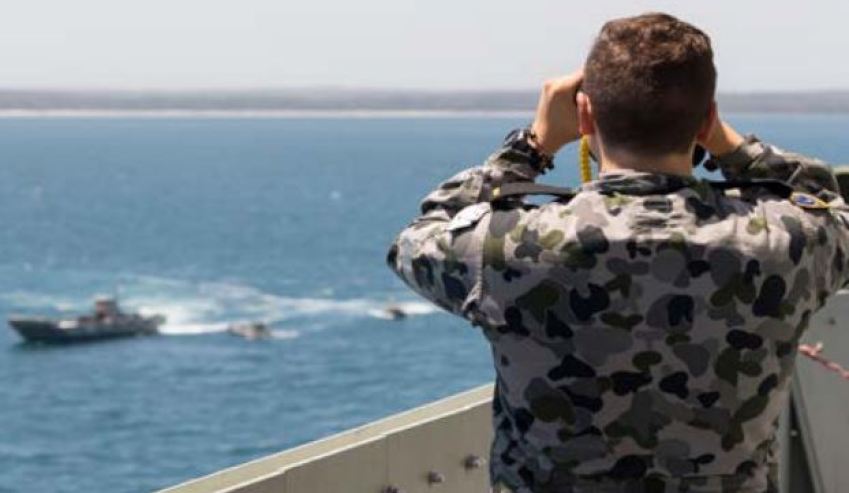Higher costs and more inefficiencies in the build of Australia’s 12 Offshore Patrol Vessels will be inevitable as a result of a split build between South Australia and Western Australia, a former Department of Defence policy analyst has said.
Regardless of which bid – Damen, Lürssen or Austal/Fassmer – is successful, Ben Coleman's Australian Strategic Policy Institute (ASPI) report has warned there is no benefit to the project in building two vessels in Adelaide and 10 in Perth.
"To be absolutely clear: there’s no benefit for the OPV project in splitting the build," Coleman writes.
"On the contrary, it will inevitably introduce inefficiencies into the construction process and increase the cost."
While the government has not claimed the build is helpful to the project, but rather is designed to support the Naval Shipbuilding Plan, Coleman stresses there is an increased duty on the government to ensure the plan is worthy of such a decision.
"The split build is designed to support the government’s Naval Shipbuilding Plan by providing work to Adelaide to keep a small workforce engaged between the end of the air warfare destroyer build and the commencement of work on the SEA 5000 frigates," the report says.
"Given the risk that is being assigned to SEA 1180 by the split build, it behoves government to be sure that the Naval Shipbuilding Plan merits it. For a split build to be a viable strategy, the benefits that flow from continuity would have to outweigh the costs to SEA 1180."
Defence Connect previously spoke with the three tenderers for the project, who all said they had no concerns about transitioning the project between states.
Dirk Malgowski, Lürssen's managing director (defence) said in June, "First of all, I think we do not have to debate it, because it is a decision made by the government to try to mitigate the slowdown in business in South Australia at the ASC facility."
The managing director said the company's method of shipbuilding across various shipyards in Germany, rather than just one, is well suited to this particular project and only lends to the company's suitability for the project.
"On the other hand, we as a German company, are very much used to, let's say, building national shipbuilding programs on different shipyards. And we even have built corvettes and frigates where the bow section was manufactured on shipyard number one, the aft shipyard number two, and it was all assembled in shipyard number three, without any major hiccups or problems, or delays," Malgowski said.
"So building two out of 12 in South Australia and then have still, let's say, a remarkable number of OPVs being built in West Australia, I think is not an issue at all. I think it will not deteriorate efficiency and effectiveness of our team."
Austal chief executive David Singleton said the plan supports the government's endeavour to establish a shipbuilding enterprise and far outweighs the costs "10 to one".
"It's quite clear that building all 12 vessels in one location would be significantly simpler than building two in one location and 10 in the other, and the output of that is that when you build vessels you have what you call a learning curve, which I call it, you know, it's like the Ikea effect: you put one cabinet together and it takes you a certain amount of time," Singleton told Defence Connect.
"By the time you've put a third one together you're doing it in half the time. And shipbuilding is like that. If you've got one vessel after another after another, you find that there's an efficiency benefit that you get through the familiarity of the workforce, and that's a cost benefit. Now, of course, by building two in Adelaide, that reduces, it doesn't eliminate, but it reduces that cost benefit.
"But having said that, that's an answer that is only looking at the vessel program itself, it's not looking about the shipbuilding enterprise. When you look at the shipbuilding enterprise, without building two of these vessels in Adelaide, what would happen is that the workforce there would go down from 2,200 or something, down to nothing for a year and then have to be built back up to two and a half thousand. Well, that's madness, particularly in the shipbuilding environment where experience and knowledge and familiarity is so important.
"What building two in Adelaide does is it means the workforce comes down to probably a bottom number of three or four hundred, so you can maintain management experience and trades experience through that transition from a destroyer program to frigate. So when you look at that point of view it actually makes a lot of sense. We've done some calculations and our view is that the benefits outweigh the costs probably 10 to one."
Both Damen and Lürssen have partnered with ASC and Civmec/Forgacs for the $3 billion project, while Fassmer entered into a joint venture with Austal.
A decision on the successful bid is expected in the coming days.









